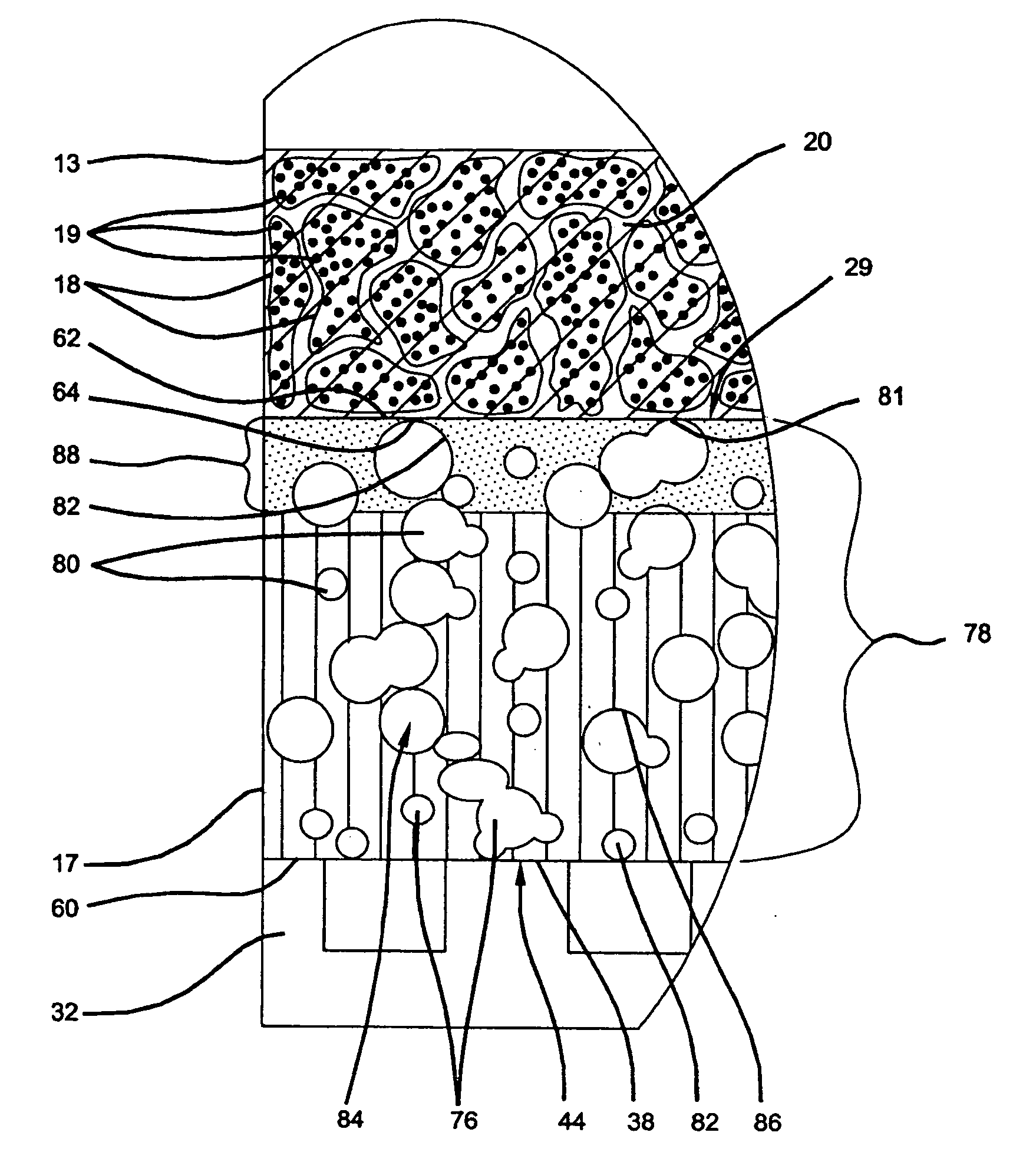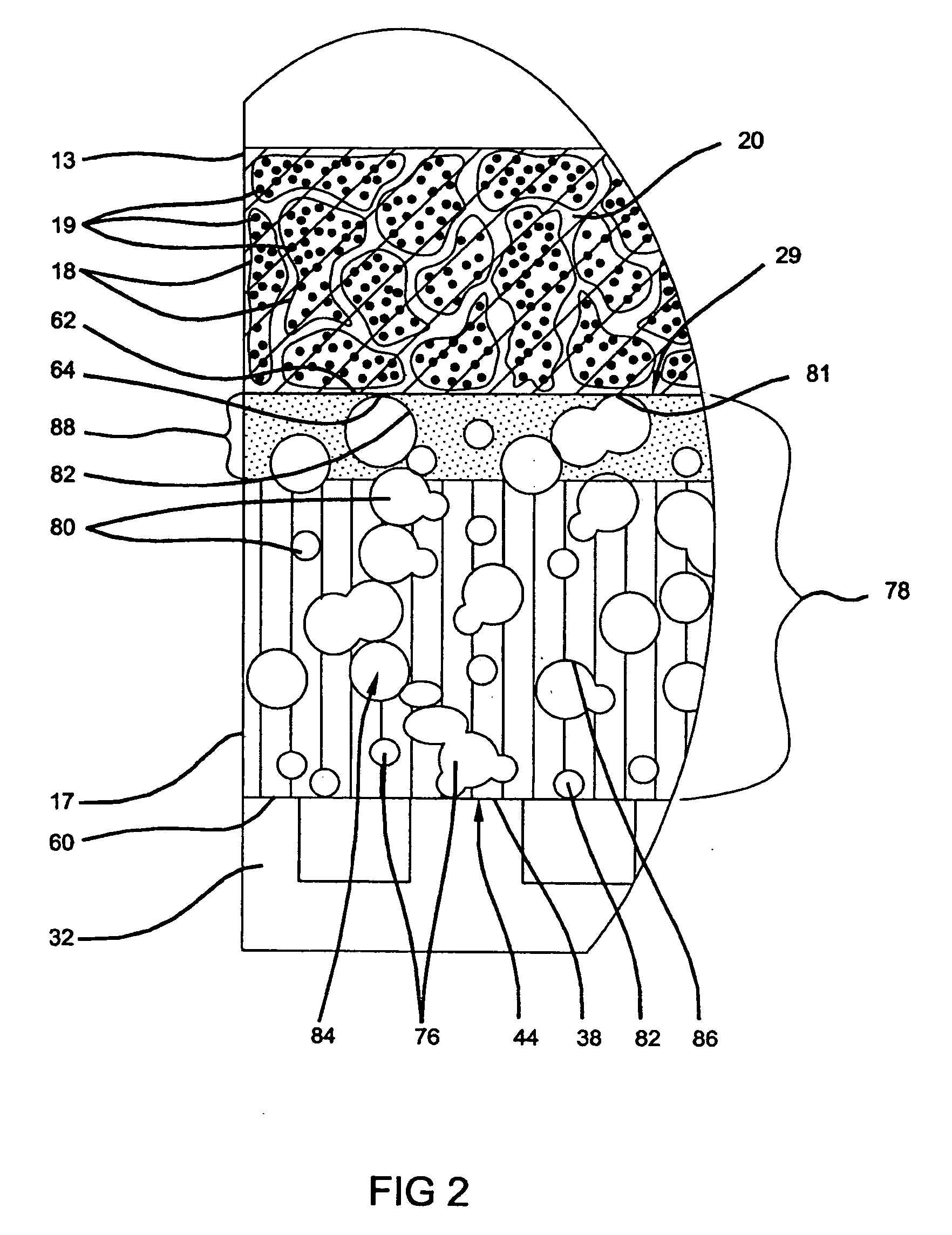Novel membrane electrode assembly (MEA) architecture for improved durability for a PEM fuel cell
- Summary
- Abstract
- Description
- Claims
- Application Information
AI Technical Summary
Benefits of technology
Problems solved by technology
Method used
Image
Examples
example 1
[0069] Experimental details regarding one preferred embodiment of the present invention will now be described in detail. As previously described, CARBEL mp30z is a microporous fiberless carbonized ePTFE having 70% by volume pores, an uncompressed thickness of about 2.5 mils, and is commercially available from the W. L. Gore Company. In the experiment, gold is deposited by ion-asssisted PVD onto the CARBEL by a Teer magnetron sputter system. The CARBEL media is introduced into the vacuum chamber and when the pressure in the vacuum chamber reaches 5×10−5 the deposition of Au is commenced. The magnetron targets are 99.99% pure Au. The Au deposition is done at −50V bias potential using 0.25 A current for one minute to achieve a gold coating thickness of 10 nm. Au is deposited at a rate of 0.16 nm / s using magnetron sputter system. The thickness of the samples is calibrated using electron probe microanalysis (EPMA). The deposition temperature is preferably about 25° C. to about 30° C.
example 2
[0070] In an alternate method of deposition by electron beam evaporation, the CARBEL mp30z media material, as described above, is introduced into the load lock of an ultrahigh vacuum electron-beam evaporation chamber. After the load lock pressure reaches 10−7 torr, the sample is transferred to the main deposition chamber. The base pressure of the chamber is 5×10−9 torr. Au is deposited at a rate of approximately 0.05 nm / s using electron-beam evaporation. The rate of deposition is controlled by a quartz crystal microbalance and is calibrated using EPMA. The deposition temperature is preferably about 25 to about 30° C. The quantity of Au deposited can be verified by placing atomically flat single crystal pieces of silicon and simultaneously depositing Au on the silicon and verifying the quantity using the EPMA.
[0071] In FIG. 5, Samples were tested on a 50 cm2 LANL hadware using a Teledyne test stand. Testing was conducted at different cathode inlet relative humidity levels to demonst...
PUM
 Login to View More
Login to View More Abstract
Description
Claims
Application Information
 Login to View More
Login to View More - R&D
- Intellectual Property
- Life Sciences
- Materials
- Tech Scout
- Unparalleled Data Quality
- Higher Quality Content
- 60% Fewer Hallucinations
Browse by: Latest US Patents, China's latest patents, Technical Efficacy Thesaurus, Application Domain, Technology Topic, Popular Technical Reports.
© 2025 PatSnap. All rights reserved.Legal|Privacy policy|Modern Slavery Act Transparency Statement|Sitemap|About US| Contact US: help@patsnap.com



